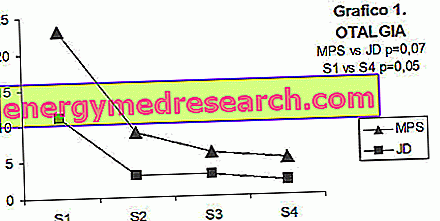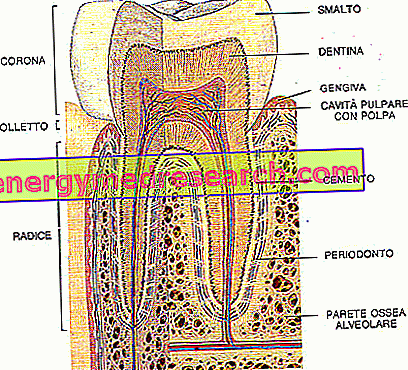
Scientific name
Panax ginseng, sin. Panax pseudoginseng
Family
Araliaceae
Origin
Perennial herbaceous plant, also known as Ren Shen or Radice Uomo, native to China, Korea and the extreme eastern regions of Russia. Today extensive cultivations are present in China, Korea, Japan and Russia.
Used Parts
Drug given by the central roots of ginseng, obtained from plants of at least 5-7 years.
Chemical constituents
- The main components are saponosides called ginsenosides, the most important being Rb1, Rb2, Rc, Rd, Rf, Rg1 and Rg2.
- Essential oil rich in sesquiterpenes;
- Polysaccharides (starches, pectins);
- Phytosterols;
- Vitamins group B;
- Choline;
- Trace elements.
The total ginsenoside content of a 6-year root varies between 0.7 and 3%. The lateral roots can have a saponin content equal to double or triple compared to the main root.
PLEASE NOTE: The term ginseng actually indicates different botanical species with tonic-adaptogenic activity: Asian ginseng ( Panax ginseng CA Meyer), North American ginseng ( Panax quinquefolius L.), Japanese ginseng ( Panax japonicus CA Meyer), Himalayan ginseng ( Panax pseudoginseng Wallich), Chinese ginseng ( Panax notoginseng Burk) and Siberian ginseng ( Eleuterococcus senticosus Maxim).
The composition of the various types is different in terms of quality and quantity.
Ginseng in Herbal Medicine: Properties of Ginseng
Ginseng improves alertness and the state of psychophysical well-being; in a double-blind placebo-controlled study, an improvement in arithmetic calculation capacity, logical deduction, attention, reaction time and feeling of well-being have been demonstrated, relieving fatigue.
Ginseng is indicated in chronic fatigue syndrome (asthenia).
Furthermore, the association of ginseng and ginkgo biloba extracts causes an increase in the level of serotonin in brain structures and an increase in ACTH levels, making this association indicated for controlling the disturbances of age-related cognitive functions.
Animal models suggest that the present saponosides induce penile vessel relaxation through the induction of NO synthesis, the release of NO at the cavernous body level and the decrease of intracellular calcium, but a radical scavenger effect was also described free.
Biological activity
Ginseng is currently used in herbal medicine to combat physical and mental fatigue and to stimulate the immune system, thanks to the adaptogenic properties of which it is endowed.
More precisely, these properties are ascribed to the set of ginsenosides contained in the plant. From the chemical point of view, these compounds are triterpene saponins with a steroid structure. Within ginseng, at least 25 different types of ginsenosides have been isolated and identified, and each of these molecules is able to act on different tissues, resulting in different biological responses.
Some studies have shown that ginsenosides act at the hypothalamic-pituitary axis favoring the release of the adrenocorticotropic hormone (or ACTH) which - in turn - promotes the release of cortisol from the adrenal glands. Cortisol acts centrally and improves the organ's non-specific resistance to external stress factors.
The properties of ginseng, however, have not ended here. In fact, some researches have shown that numerous ginsenosides are able to exert a hepatoprotective and antioxidant action by increasing the activity of glutathione peroxidase and through a weak radical scavenger action. Ginseng is also able to stimulate nitric oxide synthase at the level of cardiac tissue, thus inducing an increase in the synthesis of nitric oxide (NO).
Furthermore, the release of NO promotes relaxation and dilation from blood vessels, in particular, at the level of the corpora cavernosa. This could make ginseng a valid ally against erectile dysfunction.
The ginsenosides R0, Rg1 and Rg2, on the other hand, appear to be able to counteract the release of thromboxane, thus exerting an anti-platelet aggregation action.
Other properties are then attributed to ginseng, such as the ability to reduce cholesterol (promoting the activity of lipoprotein lipase) and glycemia (through the release of insulin).
Other studies, instead, have been carried out to investigate the potential antitumor properties of ginseng. Indeed, it appears that some ginsenosides may be useful in inducing apoptosis in some types of malignant cells.
Ginseng against physical and mental fatigue
As mentioned - by virtue of the adaptogenic activity carried out by the ginsenosides it contains - ginseng can be used to counteract physical and mental fatigue and to increase the state of vigilance.
The doses of ginseng to be taken may vary depending on the phytotherapeutic preparation to be used.
Below are some indicative examples related to the dosage that can be used:
- Dried root: 900 mg three times a day, corresponding to 40 mg of ginsenosides (with vegetable drug titrated to 1.5%) or 80 mg (with vegetable drug titrated to 3%) or equivalent preparations.
- Aqueous dry extract standardized to 4% in ginsenosides: 1-2 g per day, corresponding to 40/80 mg of ginsenosides.
Normally, treatment of no more than three months is recommended.
Ginseng in folk medicine and homeopathy
Ginseng, thanks to its different properties, has always been considered in folk medicine as a remedy indicated for the treatment of all ills.
In fact, this plant is used in folk medicine to treat the most varied diseases and pathologies, among which we mention: anxiety, neuralgia, insomnia, cachexia, loss of appetite, impotence, sterility, vomiting and gastric disorders.
Ginseng in the homeopathic field, on the other hand, is indicated for the treatment of rheumatism and as a remedy against states of weakness.
Homeopathic preparations based on ginseng can be found in the form of solutions or globules. The dosage of the product may vary depending on the homeopathic dilution used.
Side effects
After taking ginseng, side effects such as epistaxis, vomiting, headache, insomnia and agitation have been reported.
Following the intake of excessive doses of ginseng, on the other hand, ginseng abuse syndrome may occur, the main symptoms of which are: digestive disorders, insomnia, hypertension, tachycardia, headache, tremors, difficulty concentrating and irritability. This syndrome may be more likely to occur with concomitant use of neurostimulant substances (such as ephedra, synephrine and caffeine).
Contraindications
Avoid the use of ginseng in patients with hypersensitivity to one or more components, with serious psychiatric illnesses or with cardiovascular diseases. Taking ginseng can slightly reduce blood glucose levels, so diabetic patients should consult their doctor before taking the root.
Furthermore, the use of ginseng is also contraindicated in pregnant women and breast-feeding mothers.
Pharmacological Interactions
- Oral anticoagulants (such as warfarin), platelet aggregation inhibitors and NSAIDs, since the concomitant intake of ginseng can increase the risk of developing bleeding;
- Oral hypoglycemic agents and insulin, as ginseng increases its hypoglycemic effect;
- Fenelzine, since the association with ginseng can cause headache, tremors and mania;
- Caffeine and ephedrine, because ginseng can increase the risk of developing hypertension, especially if taken at high doses and for prolonged periods.
Furthermore, there is evidence that it is considered possible that ginseng may also interfere with MAOI (monoamine oxidase inhibitors), sympathomimetics, corticosteroids, etoposide, digoxin and fexofenadine .



